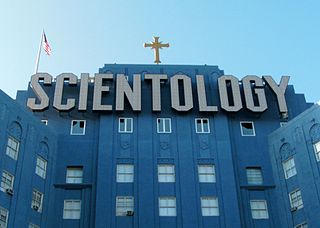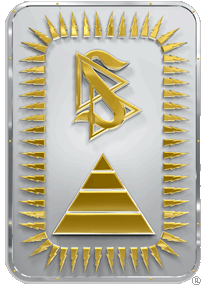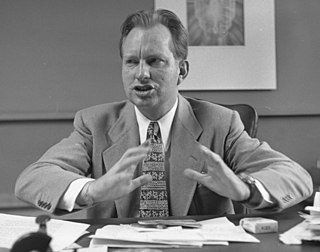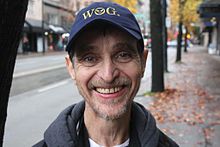
Dianetics is a set of ideas and practices invented in 1950 by science fiction writer L. Ron Hubbard regarding the human mind. Dianetics was originally conceived as a form of psychological treatment, but was rejected by the psychological and medical establishments as pseudoscientific. Dianetics was the precursor to Scientology and has since been incorporated into it.

The Church of Scientology has been involved in numerous court disputes across the world. In some cases, when the Church has initiated the dispute, questions have been raised as to its motives. The Church of Scientology says that its use of the legal system is necessary to protect its intellectual property and its right to freedom of religion. Critics say that most of the organization's legal claims are designed to harass those who criticize it and its manipulative business practices.

Free Zone, Freezone, and Independent Scientology are umbrella terms for the groups, organizations, and individuals who practice Scientology beliefs and practices independently of the Church of Scientology (COS). Such practitioners range from those who closely adhere to the original teachings of Scientology's founder L. Ron Hubbard, to those who have adapted practices far from COS beliefs and practices.

Since its inception in 1954, the Church of Scientology has been involved in a number of controversies, including its stance on psychiatry, Scientology's legitimacy as a religion, the Church's aggressive attitude in dealing with its perceived enemies and critics, allegations of mistreatment of members, and predatory financial practices; for example, the high cost of religious training:191 and perceived exploitative practices. When mainstream media outlets have reported alleged abuses, representatives of the church have tended to deny such allegations.

The Fishman Affidavit is a set of court documents submitted by self-professed ex-Scientologist Steven Fishman in 1993 in the federal case, Church of Scientology International v. Fishman and Geertz (Case No. CV 91-6426.
The Avatar Course, often simply called Avatar, is a series of LGAT self-development courses founded in 1986 by Harry Palmer and run by his privately held company, Star's Edge, Inc., which trains and licenses Avatar Masters (teachers) to deliver the Avatar Course globally. The Avatar Course has been described by many as having cult-like qualities.

The Religious Technology Center (RTC) is an American non-profit corporation that was founded in 1982 by the Church of Scientology to control and oversee the use of all of the trademarks, symbols and texts of Scientology and Dianetics. Although RTC controls their use, those works are owned by another corporation, the Church of Spiritual Technology which is doing business as L. Ron Hubbard Library, registered in Los Angeles County, California.

Operation Snow White was a criminal conspiracy by the Church of Scientology during the 1970s to purge unfavorable records about Scientology and its founder, L. Ron Hubbard. This project included a series of infiltrations into and thefts from 136 government agencies, foreign embassies and consulates, as well as private organizations critical of Scientology, carried out by Church members in more than 30 countries. It was one of the largest infiltrations of the United States government in history, with up to 5,000 covert agents. This operation also exposed the Scientology plot "Operation Freakout", because Operation Snow White was the case that initiated the U.S. government's investigation of the Church.

The term fair game is used to describe policies and practices carried out by the Church of Scientology towards people and groups it perceives as its enemies. Founder of Scientology, L. Ron Hubbard, established the policy in the 1950s, in response to criticism both from within and outside his organization. Individuals or groups who are "fair game" are judged to be a threat to the Church and, according to the policy, can be punished and harassed using any and all means possible. In 1968, Hubbard officially canceled use of the term "fair game" because of negative public relations it caused, although the Church's aggressive response to criticism continued.

Dianetics: The Modern Science of Mental Health, sometimes abbreviated as DMSMH, is a book by L. Ron Hubbard about Dianetics, a pseudoscientific system that he claimed to have developed from a combination of personal experience, basic principles of Eastern philosophy and the work of Sigmund Freud. The book is considered part of Scientology's canon. It is colloquially referred to by Scientologists as Book One. The book launched the movement, which later defined itself as a religion, in 1950. As of 2013, New Era Publications, the international publishing company of Hubbard's works, sells the book in English and in 50 other languages.

Scientology founder L. Ron Hubbard explicitly compared his teachings to the science-fiction subgenre space opera. In his writings, wherein thetans were reincarnated periodically over quadrillions of years, retaining memories of prior lives, to which Hubbard attributed complex narratives about life throughout the universe. The most controversial of these myths is the story of Xenu, to whom Hubbard attributed responsibility for many of the world's problems.

Bare-Faced Messiah: The True Story of L. Ron Hubbard is a posthumous biography of Scientology founder L. Ron Hubbard by British journalist Russell Miller. First published in the United Kingdom on 26 October 1987, the book takes a critical perspective, challenging the Church of Scientology's account of Hubbard's life and work. It quotes extensively from official documents acquired using the Freedom of Information Act and from Hubbard's personal papers, which were obtained via a defector from Scientology. It was also published in Australia, Canada and the United States.
The Church of Scientology publicly classifies itself as a religion, but scholars and other observers regard it as a business, because the organization operates more like a for-profit business than a religious institution. Some scholars of sociology working in religious studies consider it a new religious movement. Overall, as stated by Stephen A. Kent, Scientology can be seen as a "multi-faceted transnational corporation that has religion as only one of its many components. Other components include political aspirations, business ventures, cultural productions, pseudo-medical practices, pseudo-psychiatric claims, and, an alternative family structure."

Armstrong I–VIII were a lengthy series of lawsuits and other legal actions, primarily in the California state courts, arising from Gerald Armstrong's departure from the Church of Scientology (COS). The COS argued that Armstrong, a former COS employee, improperly took private papers belonging to the Church, while Armstrong argued that he took the papers to protect himself from improper disciplinary proceedings and that the Church did, in fact, discipline him improperly.

L. Ron Hubbard, Messiah or Madman? is a posthumous biography of Scientology founder L. Ron Hubbard written by Bent Corydon, which makes extensive use of interviews he conducted with Hubbard's son Ronald DeWolf. Though originally published in 1987 by Lyle Stuart Inc., the book was re-issued in a paperback edition on July 25, 1992, and a hardcover edition in October 1995, both by publisher Barricade Books. The 1995 edition also featured Brian Ambry as principal researcher. The first edition of the book listed DeWolf as coauthor.

The intersection of Scientology and abortion has a controversial history which began with Scientology founder L. Ron Hubbard's discussion of abortion in his 1950 book Dianetics: The Modern Science of Mental Health. Hubbard wrote in Dianetics that abortion and attempts at abortion could cause trauma to the fetus and to the mother in both spiritual and physical ways. Scientologists came to believe that attempted abortions could cause traumatic experiences felt by the fetus, which would later be remembered as memories referred to in Scientology as "engrams". In the Scientology technique called Auditing, Scientologists are frequently queried regarding their sexual feelings and behaviors. These questions about Scientologists' sexual behavior are often posed to members during "security checks", a specific form of auditing sessions where individuals are required to document their divergence from the organization's ethics. One of the questions asked in these security checks is, "Have you ever been involved in an abortion?".

The "Affirmations", also referred to as the "Admissions", is a document written around 1946 or 1947. It does not list an author, but it is widely believed to have been written by L. Ron Hubbard, a few years before he established Dianetics (1950), which formed the basis for Scientology (1952). The document consists of a series of statements by and addressed to Hubbard, relating to various physical, sexual, psychological and social issues that he was encountering in his life. After the Affirmations became public knowledge in 1984, the Church of Scientology initially disputed their authenticity. However, they later effectively admitted the document's authorship, describing the work in legal papers as having been "written by" Hubbard and seeking to retain ownership of it.
Scientology in Egypt has no official presence because non-monotheistic religions are not recognized in Egypt. The Church of Scientology has claimed that Egypt is one of the "countries in which Dianetics and Scientology services are ministered", but there are no known membership statistics available. In 2002, two Scientologists were detained by Egyptian authorities under the charges of "contempt of religion". As of 2010, books authored by Scientology founder L. Ron Hubbard and printed by the Church of Scientology for its front groups were being distributed in Egypt—even bearing the approval of Al-Azhar, the highest Sunni learning institution in the Muslim world. Narconon, an organization which promotes Hubbard's drug abuse treatment, has a branch in Ismailia Governorate called "Narconon Egypt".

Scientology is in part derived from, and shares elements with, a number of esoteric or occult systems. The extent of the influence of specific occult belief systems on Scientology is a subject of debate amongst scholars.

The tax status of the Church of Scientology in the United States has been the subject of decades of controversy and litigation. Although the Church of Scientology was initially partially exempted by the Internal Revenue Service (IRS) from paying federal income tax, its two principal entities in the United States lost this exemption in 1957 and 1968. This action was taken because of concerns that church funds were being used for the private gain of its founder L. Ron Hubbard or due to an international psychiatric conspiracy against Scientology.








